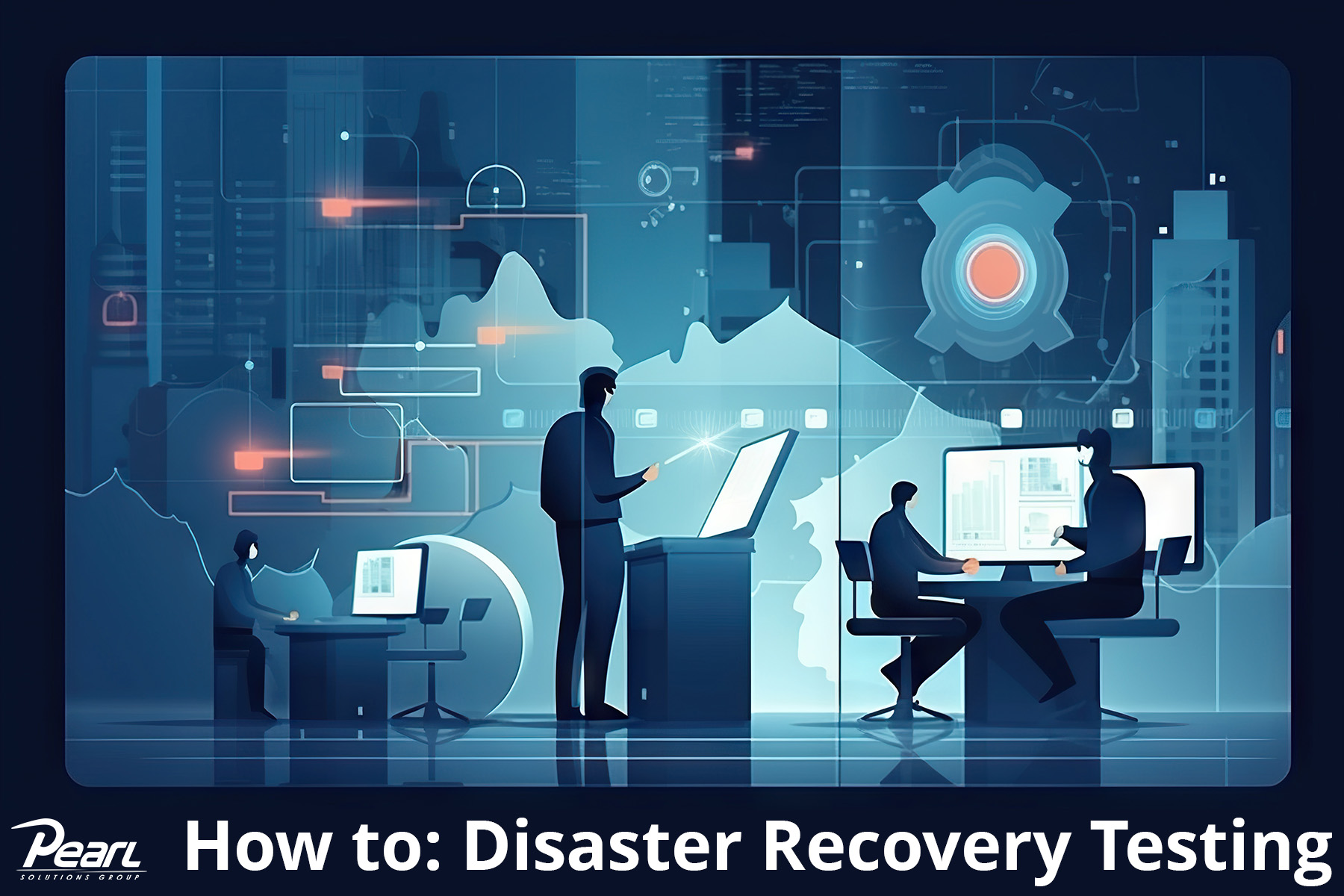Disasters, whether natural or technological, can strike at any time, potentially jeopardizing operations and data integrity. To safeguard against such threats, implementing a robust disaster recovery plan is crucial. One essential aspect of this plan is regular disaster recovery testing. Regular testing provides the opportunity to simulate various disaster scenarios in a controlled environment, validating the readiness of your plan and identifying potential weaknesses. Let’s walk through how to do disaster recovery testing.
Tabletop Exercises: Tabletop exercises involve simulated discussions that allow teams to walk through various disaster scenarios collaboratively. By simulating potential crises and discussing recovery steps, teams can identify gaps in their disaster recovery plan and refine their response strategies. You must have representation from each department or function within your business to make sure you identify not only possible scenarios but also get critical insight into the depth of impact on ALL operations.
Infrastructure Failover: Testing the ability to switch to a backup infrastructure is critical for ensuring seamless operations in the face of infrastructure failures. Small businesses should periodically perform infrastructure failover tests to verify that their backup systems can seamlessly take over in case of a primary infrastructure failure. This includes establishing redundancy through backups, simulating scenarios where the primary infrastructure fails, ensuring data is replicated and synced between primary and backup systems, evaluating the automatic triggering and switchover processes, and testing the effectiveness of network redirection mechanisms.
Application Failover: Application failover testing involves transferring critical application processes to a secondary system without interruption. This ensures that business operations can continue without significant downtime. Small businesses should regularly test application failover procedures to maintain operational resilience through identifying and prioritizing critical applications, simulating scenarios where a critical application fails, and ensuring applications transfer active sessions, maintain data integrity, and redirect user requests to the backup system without noticeable interruption.
Simulations on Test Systems: Creating disruptions in controlled test environments allows businesses to assess their recovery procedures without risking real-time operations. Small businesses can simulate disasters in test systems to identify weaknesses, refine recovery processes, and train employees on proper response protocols.
Simulations on Production Systems: Unlike simulations on test systems, which are conducted in controlled environments, this approach involves deliberately creating disruptions in actual production environments. While riskier due to the potential impact on live operations, the insights gained from real-world simulations are invaluable in refining recovery processes, enhancing overall resilience, and ensuring that the organization can confidently navigate and overcome unexpected disruptions.
Automated and Ongoing Disruptions to Production Systems: To stay ahead of potential threats, small businesses should implement automated, continuous tests in production environments. This involves regularly disrupting systems in a controlled manner to assess the immediate response and long-term recovery capabilities. Automation tools are programmed to intentionally introduce disruptions or failures into the production environment, simulating real-world scenarios. These tools can be configured to run tests regularly, providing a continuous assessment of disaster recovery readiness.
For small businesses, investing time and resources in comprehensive disaster recovery testing is a proactive measure to mitigate the impact of unforeseen disruptions. By incorporating tabletop exercises, infrastructure and application failover tests, simulations in test and production systems, as well as automated ongoing disruptions, businesses can fortify their disaster recovery plans. This strategic approach not only safeguards against potential disasters but also instills confidence in the organization’s ability to maintain business continuity in the face of adversity. An IT partner can help you ensure the effectiveness of your IT disaster recovery plan with rigorous and continuous testing. Get help.




